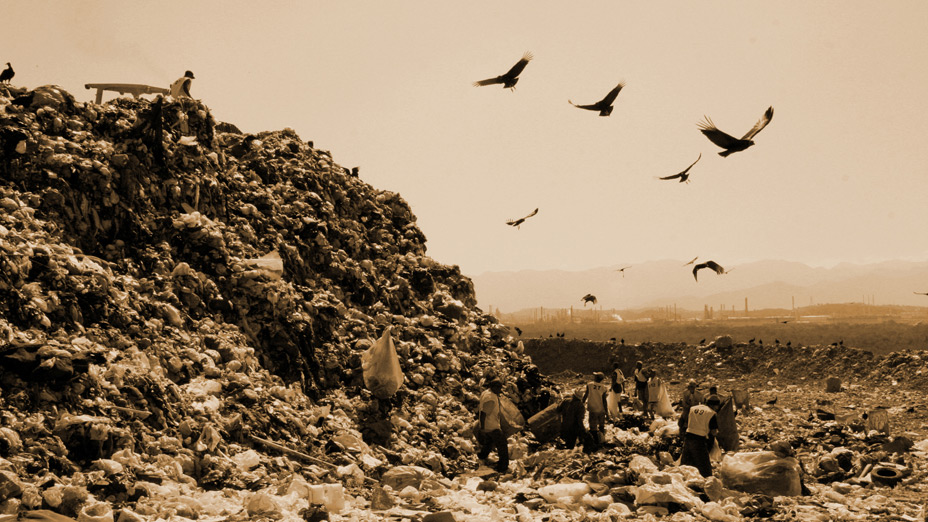As part of the 2012 noon-to-midnight MIT Urban Planning Movie Marathon, we screened Waste Land, which has already won a number of awards, including the 2010 Audience Award for Best World Cinema Documentary at Sundance, an Oscar nomination for Best Documentary Feature, and the Amnesty International Human Rights Film Award given out in Berlin. It is really a great movie: clever dialog, complex characters, a well-paced story that develops over the course of the film in unpredictable ways, a compelling (but not overpowering) soundtrack, and stunning camerawork that makes great use of the entire screen. Added to all of this, it calls attention to a global policy problem that is all-too-easy to ignore: what happens to the waste we all create, and what are the environmental and human consequences of our very way of life.

The film follows Brazilian-born Brooklyn artist Vik Muniz as he travels to “Jardim Gramacho,” a sprawling landfill located outside of Rio de Janeiro. He’s a fun, interesting protagonist – clearly believing in the importance of his work but also able to see the absurdity in the entire world of art – and he seems comfortable navigating easily between the slums of Rio and the art galleries of London. Early in the film he dreams up the crazy idea of making portraits of Gramacho’s garbage pickers – not with film or paint, but by literally drawing them in garbage.
The true stars of the film, though, turn out to be the pickers themselves, who pose for – and help him assemble – these portraits. As we get to know them, they are each given plenty of screen-time to develop: we hear histories, hopes, and dreams; we learn how they came to work at Gramacho; and we see where they live and how they survive. We also learn about the pride they take in this work: this is recycling, not garbage picking, and this work is important and productive, not depressing; this is no “How the Other Half Lives.” Fittingly, as these heroes are all larger than life, the portraits Muniz creates are immense as well: he composes them (collaboratively with the pickers themselves) on the floor of a huge empty warehouse, which provides a nice contrast to the crowded, noisy expanse of the dump.
All of this is a great story, but for me the film reaches a whole new level when the pickers begin to see the life outside their own world of garbage – notably, the art world of Muniz – and begin to question what they want in their own lives. This dilemma unfolds in real-time for both the film-makers and their subjects (and we – the audience — are made to squirm with discomfort a bit as well). Happily, the film steers away from pat analysis of the issue or easy answers, but it manages to end on a generally positive note all the same.
(Note: this review originally appeared on the author’s CityState blog.)
